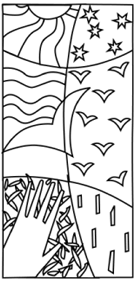 |
|||||||||||||||||
|
|||||||||||||||||
|
|||||||||||||||||
|
Rural, Remote and Northern Women's Health: Policy and Research Directions COMMUNITY KIT |
|
||||||||||||||||
R. Sutherns, S. Fish This is a kit designed to improve the health of rural, remote and northern women across Canada by making sure that women have a say in how health programs, plans and policies are developed. No one is more important in this process than you. No one will have more passion about improving rural women’s health than rural women. No one has more insight into the challenges or the solutions. This kit was developed from a national project that included consultations with women who live in many different rural or remote places throughout Canada – from the high arctic to the prairies to coastal regions and everywhere in between – and it reflects their concerns. The final report Rural, Remote and Northern Women’s Health: Policy and Research Directions was released in June 2004. Women who were part of the national project said that a practical kit like this one would give them the information they need to make helpful changes in their communities. We hope you think so too. Each person has specific concerns about rural women’s health. This kit will help you find ways to express your concerns to the right people. It also provides you with links to good resources and other people who share your concerns. We hope this kit meets your needs and helps make changes that improve your participation in change and in getting good health care for you, your family and your community. Let us know how the kit helps you make a difference, and how we can make it better. Together we can improve rural women’s health! One important note about the report - when the term “rural women”
is used in this kit, it refers to women living in rural, remote and
northern parts of the country.  Back to top of page |
|||||||||||||||||
This website is copyrighted by the
Prairie Women's Health Centre of Excellence, © 1998-2011.
Website design: Pamela Chalmers E-mail: pwhce@uwinnipeg.ca. |
|||||||||||||||||
 |
|||||||||||||||||

